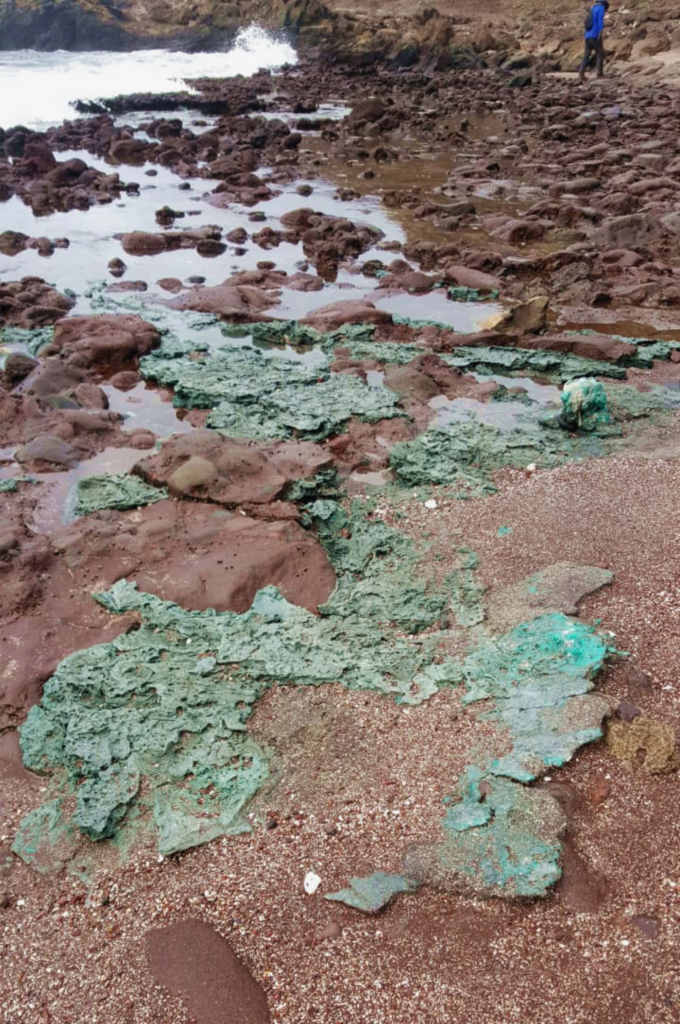
In 2019, Fernanda Avelar Santos (a geologist), found “Plastic Rocks” on a protected island in Brazil (Trindade Island). This island has no human involvement other than the Brazilian Navy (which protects this island) and occasionally people who conduct scientific research. Santos went to the island to work on a completely separate project but stumbled upon these “blue-ish” large rocks. Initially, her and her team didn’t understand what it is but she took them back to her research lab after the 2-month expedition and discovered that it was rocks that have been mended and melted together with plastic (CNN). This was extremely concerning because other than a few Navy personnel, no one inhabits the island, so plastic trash is damaging an island that has little to no human interaction.
I reviewed a source from CNN since typically this news station typically doesn’t cover news like this in a serious matter. They cover this story in a few short paragraphs just stating the facts about the situation-I don’t sense any bias in their tone or writing. They just talk about the importance of the Brazillian Island, how the scientists found the rocks, and that they ran experiments to discover what these rocks were composed of. They don’t really go into the science aspect part of it (which I didn’t really expect) but it would’ve been better if this source found a way to interview the scientist or her team. Overall, I do still think it was a good source because they do state why it is bad that these rocks are being spotted.
The other source I reviewed was a more science-based source that talked about the names and identities of rocks as well as rock formations. The journalist, Joshua Howatt Berger, clearly has a much better understanding of what is happening, which means he has done more to understand why the plastic rocks are happening and why. The plastic rocks seem to be caused mostly by left behind fishing nets and other types of plastic trash being swept onto the shores (Berger). In addition, they do even post some quotes by the scientist; Trindade “is the most pristine place I’ve ever seen,” she said, “Seeing how vulnerable it is to the trash contaminating our oceans shows how pervasive the problem is worldwide.” I think this is definitely the better source because of how in-depth they go into the formation of these rocks and why they pose such a severe problem.
The two sources do differ, and the more scientific source is the better one. While CNN doesn’t particularly do anything wrong in their coverage, it’s just very minimal. We need to understand why this is happening, whether it’d be because of the overconsumption of products/plastic, or because of littering/non properly throwing waste away (or a combination of both). It matters because we need to understand the science and what we can do to stop this from continuing. To have human waste show up onto an island with no human interaction/activity is very frightening- if this is happening there, what will soon happen to places where people live? Joshua Berger does a better job at explaining why we should be concerned and trying to do something to stop this.
I don’t really remember a scenario in class where we talk about environmental issues in Latin America, but these are issues that are very important as our world keeps getting worse due to over-consumption, waste, and over-production. It is important (Not just in Latin America) but everywhere to understand these problems to be able to stop them.
Works Cited
Berger, Joshua Howat. “Scientists Make ‘Disturbing’ Find on Remote Island: Plastic Rocks.” Phys.org. Phys.org, March 21, 2023. https://phys.org/news/2023-03-scientists-disturbing-remote-island-plastic.html#:~:text=’Plastic%20rocks’%20%2D%20rocks%20formed,the%20most%20ecologically%20important%20beaches.%22.
“Brazilian Researchers Find ‘Terrifying’ Plastic Rocks on Remote Island.” CNN. Cable News Network, March 16, 2023. https://www.cnn.com/2023/03/15/americas/brazil-terrifying-plastic-rocks-intl-latam/index.html.